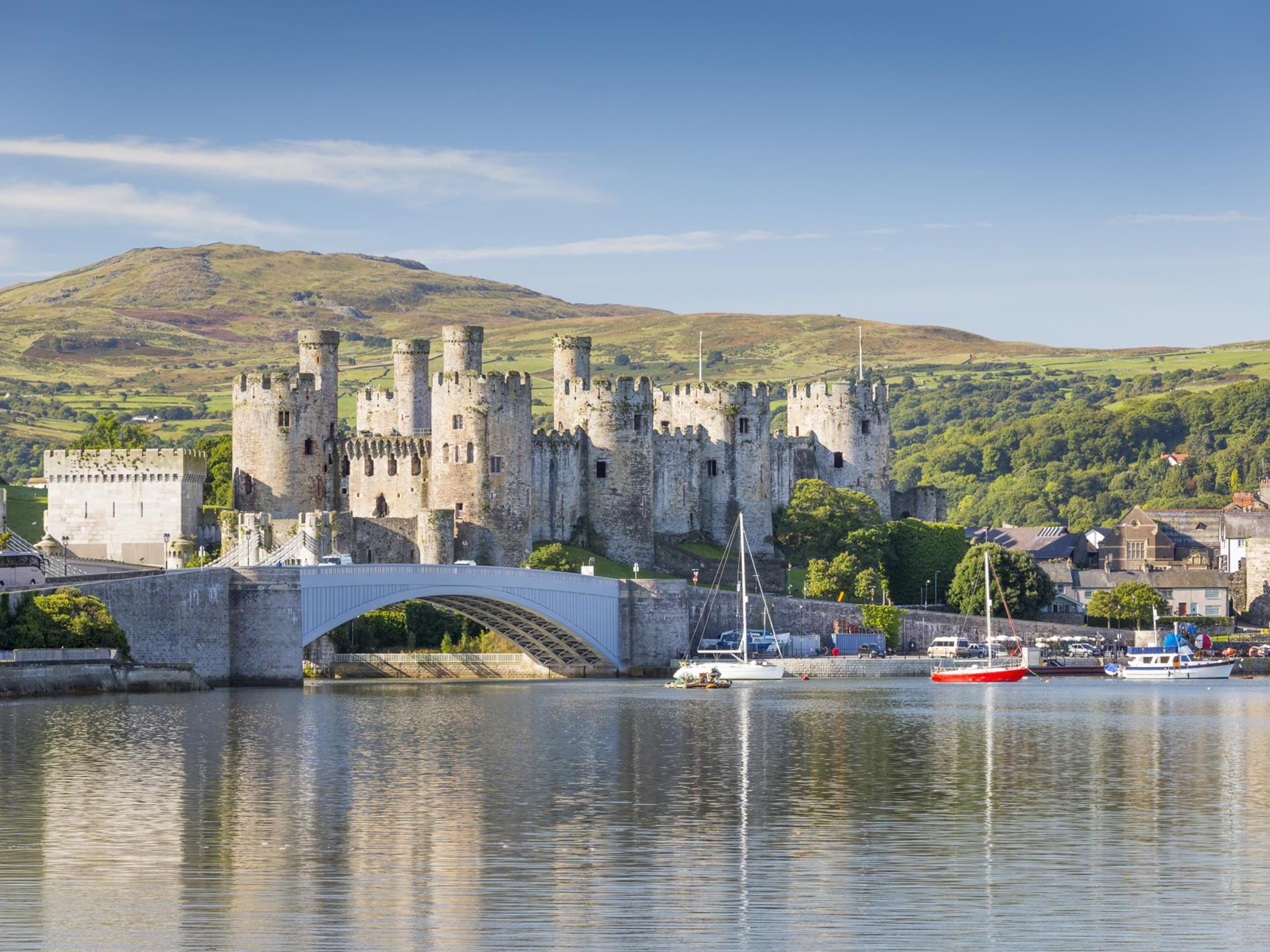TREFRIW 8 miles S of Conwy on the B5106 A Trefriw Woollen Mill C Fairy Falls G Taliesin This village, nestling into the forested edge of S...
TREFRIW 8 miles S of Conwy on the B5106 A Trefriw Woollen Mill C Fairy Falls G Taliesin This village, nestling into the forested edge of Snowdonia in the beautiful Conwy valley, sits on an old Roman road. It was once one of the homes of Llywelyn the Great, and the Parish Church of St Mary stands on the site of a former church built by him to please his wife, who refused to climb to the church at Llanrhychyrn, above the village. Standing eight miles from the sea, it was once the biggest inland port in Wales. The village today has two main attractions,
Trefriw Woollen Mill and the local chalybeate springs. The woollen mill has been in operation since the 1830s and is still owned by descendants of Thomas Williams, who purchased it in 1859. It is run by hydro-electric power generated from the two lakes – Crafnant and Geirionydd – which lie to the west of the village. While the source of power is modern, the tapestries and tweeds produced here from raw wool are very traditional. A footpath above the woollen mill leads to Fairy Falls where, in the early 19th century, a forge was founded to make hammers and chisels for use in the slate quarries. It closed at the beginning of the 20th century. Sometime between AD100 and AD250, while prospecting for minerals in this area,
Romans opened up a cave where they found a spring rich in iron (chalybeate). Covered in later years by a landslide, it was not until the 18th century that the spring was uncovered by Lord Willoughby de Eresby, owner of nearby Gwydir Castle, who went on to built a stone bathhouse. Taking the waters became so popular that by 1874 the original bathhouse was replaced with a pumphouse and bath, and the bottled water was exported worldwide.
Following a decline during much of the 20th century, interest in the natural spring waters has been rekindled. Visitors can take the waters, view the museum artefacts in the tearoom and browse in the spa beauty shop. Lake Geirionydd, to the south of the village, was the supposed birthplace, in the 6th century, of the great bard Taliesin, to whom in 1850, Lord Willoughby erected a monument. Taliesin was possibly the earliest poet to write in the Welsh language. He was referred to as the “Chief Bard of Britain”, and is said to have served at the court of at least three British kings. In 1863, a local poet, Gwilym Cowlyd, being dissatisfied with the National Eisteddfod, started an arwest, a poetical and musical event that was held in the shadow of the monument every year until 1922. The monument fell down in a storm in 1976,
but was restored in 1994. It lies on one of Active Snowdonia’s Conwy Valley walks, which also passes Fairy Falls and old mine workings. The walk skirts Lake Crafnant and provides memorable views at many points along its route.


No comments